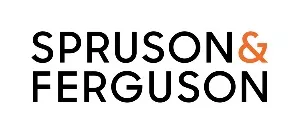- with readers working within the Pharmaceuticals & BioTech industries
- within Privacy topic(s)
- with Senior Company Executives, HR and Finance and Tax Executives
As pharmaceutical innovation increasingly targets specific disease subtypes and personalised therapies, patent protection strategies must evolve accordingly—especially in jurisdictions like China, where method of treatment claims are not patentable.
This article explores a successful approach to secure protection for a known active pharmaceutical ingredient (API) used to treat a disease subtype under China's Swiss-type use claim framework. It highlights how inventive step can be established through clinical distinction and strategic claim drafting, offering valuable insights for patent professionals and innovators worldwide.
Understanding Swiss-type use claims in China
In China, direct claims to methods of medical treatment are excluded from patentability. Instead, applicants must rely on Swiss-type use claims, typically structured as:
"Use of compound X in the preparation of a medicament (or kit) for treating disease Y."
To meet the requirements of novelty and inventive step, such claims must demonstrate a distinguishing feature—such as:
- A novel or structurally distinct compound (X),
- A new therapeutic indication (Y), or
- A unique aspect of the medicament's preparation (e.g., dosage form, administration route, or unit dose).
This framework is similar in concept to second medical use claims in Europe (now typically drafted in EPC 2000 format: "Compound X for use in the treatment of disease Y") and contrasts with the United States, where method of treatment claims are patentable directly.
The challenge: known APIs and disease subtypes
A common hurdle arises when the invention involves a known API used to treat a subtype of a known disease. Chinese examiners often reject such claims for lack of inventive step, arguing that the therapeutic effect on the subtype is predictable if the broader disease category has already been disclosed in prior art.
To overcome this, applicants must demonstrate that the disease subtype is clinically distinct and that the API's effect on this subtype is unexpected or surprising.
Case study: Antibody Use for Treating Extensive-Stage SCLC
In a recent case, we supported an applicant in prosecuting a Chinese national phase entry of a PCT application claiming the use of a known antibody for treating small cell lung cancer (SCLC). The CNIPA initially rejected the claims, citing prior art that disclosed the antibody's use in treating SCLC generally.
Working with our client's post filing data, we identified that the specification emphasised the antibody's surprising efficacy in treating extensive-stage SCLC (ED-SCLC) – a more advanced and aggressive form of the disease characterised by widespread metastasis. The cited prior art did not disclose or suggest this specific application.
We advised the applicant to:
- Amend the claims to limit the therapeutic indication to ED-SCLC.
- Submit evidence demonstrating that ED-SCLC is a distinct clinical condition, with different progression, prognosis, and treatment protocols compared to limited-stage SCLC.
- Provide post-filing clinical data supporting the antibody's efficacy in treating ED-SCLC.
The applicant followed this strategy, and the examiner ultimately agreed that ED-SCLC constituted a new therapeutic indication. The amended claims were granted.
Key takeaways for global patent strategy
This case offers several strategic insights for patent professionals and innovators:
- Disease subtyping as a differentiator: Clearly define and distinguish disease subtypes in the specification and claims. Clinical, pathological, or mechanistic differences must be well-supported.
- New medical use of known APIs in disease subtypes can still be patentable: Inventive step can be established by demonstrating an unexpected or superior therapeutic effect in a new clinical context.
- Evidence is critical: Post-filing data, mechanistic studies, and comparative analyses can significantly strengthen the case for inventiveness.
- Tailored claim drafting: Narrowing claims to specific subtypes or stages of disease can be an effective strategy to overcome prior art and examiner's objections.
Jurisdictional Perspective
- China: Swiss-type use claims remain the primary route for protecting medical uses. Disease subtypes can be recognised as new indications if properly substantiated.
- Europe: Swiss-type claims have evolved into EPC 2000 format. Similar arguments around subtypes and inventive step apply.
- United States: Method of treatment claims are allowed, but demonstrating unexpected results or clinical significance remains important for overcoming obviousness rejections.
How we can help
As precision medicine continues to shape the future of healthcare, patent strategies must adapt to reflect the nuanced distinctions between disease subtypes and therapeutic responses.
Our team in Beijing and Hong Kong work closely with clients globally to identify proactive patents strategies and ensure their filing and claim strategies are tailored to maximise their rights and commercial outcomes. Reach out to the team for further information.
The content of this article is intended to provide a general guide to the subject matter. Specialist advice should be sought about your specific circumstances.



